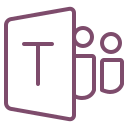
What is Reverse Brainstorming?
Reverse Brainstorming is a creative problem-solving technique that flips traditional thinking. Instead of asking, "How do we solve this problem?" you ask, "How could we cause this problem?" This method, often referred to as reversal thinking, forces teams to approach challenges from a completely different angle.
By thinking in reverse, teams can identify hidden causes of a problem and develop more innovative solutions. This method is especially useful when standard brainstorming techniques are not yielding the desired results.
Where is Reverse Brainstorming Used?
Reverse Brainstorming is widely used in various industries and professional settings, including:
- Product Development – To identify potential product flaws and improve features.
- Marketing & Advertising – To anticipate campaign risks and refine engagement strategies.
- User Experience (UX) Design – To uncover usability issues by thinking in reverse.
- Business Strategy – To challenge assumptions and explore alternative growth strategies.
- Problem-Solving Workshops – To enhance brainstorming agendas by encouraging creative thinking.
Who Can Use Reverse Brainstorming?
This technique is beneficial for professionals across various roles, such as:
- Design Thinkers & UX Designers – To improve user experience by identifying pain points.
- Product Managers – To analyze potential product issues before launch.
- Marketing Teams – To craft innovative and foolproof marketing strategies.
- Business Consultants – To help clients view their problems from a new perspective.
- Software Developers – To anticipate and prevent bugs or security vulnerabilities.
How to Do Reverse Brainstorming Using This Template?
To give you a head start, we've created a structured template with neatly organized sections, allowing your team to dive into the reverse brainstorming process right away. If you need additional guidance, follow these step-by-step instructions to make the most of the template.
1️⃣ Define the Problem or Goal
Begin by writing down the core problem or challenge in the "Define the Problem" section. This should be a clear statement of what you’re trying to solve.
✅ Example: "How can we improve customer retention?"
2️⃣ Reverse the Problem Statement
Instead of asking how to solve the problem, flip it to focus on making the problem worse. Write this reversed statement in the "Reverse the Problem" section.
✅ Example
- "How can we lose more customers?"
- "How can we make our product less appealing?"
3️⃣ Generate Reverse Ideas
Brainstorm ways to make the problem worse. Encourage wild, exaggerated, or even ridiculous ideas. Write down all possible ways you could intentionally make things worse in the "Collect Ideas" section.
✅ Example
- Ignore customer feedback.
- Make customer service slow and unhelpful.
- Increase prices without adding value.
4️⃣ Reverse the Ideas into Solutions
Now, take each negative idea and flip it into a potential solution. Write these revised ideas in the "Reverse the Ideas" section.
✅ Example
❌ Ignore customer feedback → ✅ Create a feedback system and act on it.
❌ Make customer service slow → ✅ Offer 24/7 live support.
❌ Increase prices without adding value → ✅ Introduce loyalty discounts.
5️⃣ Identify Solutions
Review the reversed ideas and select the most valuable solutions to address the original problem. Move them to the "Identify Solutions" section.
By following this structured approach, teams can identify innovative solutions and approach problems from a new angle. 🚀
When to Use Reverse Brainstorming ?
Reverse brainstorming is especially useful when:
🔹 Traditional brainstorming isn’t working – If your team is facing a creative block, this technique can spark fresh ideas.
🔹 You need a new perspective – Helps teams break out of conventional thought patterns.
🔹 Risk management & mitigation – Thinking in reverse helps anticipate potential risks and prepares teams for worst-case scenarios.
🔹 Complex problem-solving – Ideal for addressing stubborn or deeply ingrained challenges.
No matter the problem, MockFlow’s IdeaBoard makes reverse brainstorming seamless and highly collaborative.
Get Started with MockFlow
Ready to think in reverse and discover innovative solutions? Use our Reverse Brainstorming template to transform challenges into opportunities.
👉 Sign up for MockFlow now and start brainstorming smarter today!










